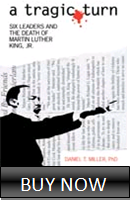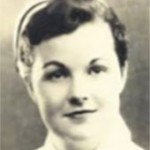
They are the Pandemic Presidents, Donald J. Trump and T. Woodrow Wilson. We’ll get to that in a minute. First, I’d like you to go back and breathe in the early winter air of late 2016.
That’s when I got the first whiff, invisible yet detectable. Time tracks forward, in a line from one minute to the next, one day to the next, and on we go. In reality, though, time flows as well as tracks—in half-turns, at rounded angles, and as currents within currents. So it smelled to me that the flow might be more important than the track.
And that’s why I kept thinking in late 2016 that incoming POTUS 45, Donald J. Trump, shared some rather important connections to POTUS 28, T. Woodrow Wilson, which weren’t being discussed.
Here, There, Everywhere
Think back and everyone was talking about POTUS 45 and populism. Populist here, populist there, populist, populist everywhere. For my part, I agreed, emphasizing the commonalities between Trump and POTUS 7, Andrew Jackson, probably our first “populist”-style president. I still think they fit in leadership style.
But my usage of Wilson was different. I was a lonely soul invoking together the college president and the real estate developer.
My early pairing of Wilson and Trump started with the 1910s. It’s one of three key stories from the American past that help us understand POTUS 45’s election. In addition to 1) Jackson in the 1820s-1830s and 2) the birth of a political party in the 1850s, I emphasized 3) the reality of a President winning one of the most divisive, hostile, and emotionally explosive elections in American history—the election of 1912—and then having to actually be president from there. I thought it was a good frame of reference for understanding presidential implementation with such a starting moment.
Also, I pointed out to my clients the odd similarities between the two Presidents’ inaugural speeches. They shared some shocking statements and spirit. Fascinatingly, both Presidents had tensions with Mexico to manage and had pledged to lift up the trodden-on Common American burdened with unfair trade and commerce practices. Going further, I mentioned that Wilson brought in a strong strand of anti-Other—a group of his supporters believed they’d been kept out of power and influence for generations—which, in Wilson’s case, focused on Black Americans and race-based attitudes. It was my fear we would see such a thing repeated in general tones.
But here’s where things got weird.
The Chilling Remark
I also urged my clients to read a statement by Wilson in 1914, chilling in hindsight. Wilson observed that as an American president who had won office through a set of planned domestic policies, it would be supremely ironic if his presidency became known for a foreign-policy issue or event. Even as he uttered these words the seeds of trouble had rooted and sprouted in European soil. And how right, how tragically right, he was—the World War of 1914-1918 became the defining issue of the Wilson Administration. Wilson’s handling of the World War affects us still.
Honestly, my thought in emphasizing this quote was to suggest that POTUS 45 might deal with the same fate of a foreign-policy event. Not true, as it turns out, a global or international war hasn’t occurred. Remember, though, that time flows as well as tracks and life brings us here around the bend: a POTUS self-defined as all-dominant, all-powerful, and larger-than-life is gut-punched by a germ visible under a microscope. You want irony? There it is, supreme irony, and Woodrow Wilson would solemnly agree.
And so we have the Pandemic Presidents.
The Pandemic Presidents and Ten Points of Connection
1) Both Trump and Wilson were busy with other actions when a pandemic struck from overseas, whether in origin or in worsening stages.
2) Both Trump and Wilson preferred to continue emphasizing those other actions as the pandemic unfolded in waves.
3) Both Trump and Wilson demonstrated behavior that seemed to many people off-stride in their insistence on avoiding the pandemic as a dangerous national issue.
4) Both Trump and Wilson favored avoiding public gestures and symbolic displays that were associated with the pandemic.
5) Both Trump and Wilson embraced a “business-as-usual” mantra which they believed far better served national interests than their detractors allowed.
6) Both Trump and Wilson acted in a media environment that often worked on opposite extremes and edges—some media highlighted the pandemic while others did not, which from either end usually reflected their support of or opposition to POTUS and POTUS’s primary issues, policies, and overall conduct.
7) Both Trump and Wilson were married to First Ladies—not their first wives, as it happened—who participated in public events meant to encourage at least the First Family’s acknowledgment of the pandemic.
8) Both Trump and Wilson shaped election strategies—a presidential election for one and a mid-term election for the other—that sought to place the pandemic in a secondary or background role.
9) Both Trump and Wilson suffer from some form of the pandemic as patients and emerge as survivors—in one case the experience may have opened a vulnerability to subsequently serious health problems, while the other case is still living out in the present and hopefully will avoid the fate of the former.
10) Both Trump and Wilson’s personal encounter with the pandemic resulted from conducting what they saw as a critical function of their core cause—for one it was an international peace conference in Paris where the draft treaty ending the World War is finalized, while for the other it is either a Supreme Court nomination event (fulfilling campaign pledges to elevate conservative justices to the Court) or a fundraising event among supporters (generating money for the final stretch of the campaign).
Differences exist. I appreciate that fully. One of them is the power of the federal government, a thing with a long life now but in its infancy then. In addition, communication is constant, instant, and insistent. Another difference—and this is no small thing—is that Trump’s personal encounter with the pandemic is in Wave Two, and Wilson’s was in Wave Three as the illness was in a national moment of comparative decline. Probably a fourth point of difference is our collective confidence in science generally and medical science specifically. Ours is an expectation and demand for a scientific, medical break-through. Theirs was more hope, more wish, a faith-based call for some sort of answer.
Now, where do we go?
As I said, Wilson’s illness came when the pandemic was in the third of four Waves. That’s the back half of the experience as we look into the past. Trump’s is earlier on, though it feels later because we live in present tense. I think it’s my service to you to attempt to draw meaning from Wilson’s future as it became Wilson’s present and then vanished into our past.
Wilson’s story after sickness shows that he didn’t change his approach to the pandemic. His illness made no difference as far as his attitude or action toward the pandemic went. Instead, he kept pushing and driving toward his major agenda item—formal approval of the peace treaty by the American government and the American people. The pandemic was always a subplot and sideshow in his mind.
Wilson’s story shows a deeper meaning as well for where we might go. I’ll struggle to share it effectively because of the abstractness, but I’ll try. Bear with me. It pertains to perspective and emerges from his unchanging outlook on the pandemic.
Wilson’s outlook and conduct in Waves Three and Four spun further and further away from the reality of mainstream American life. The longer he went into Wave Three (when he fell ill in April) and into Wave Four (when he suffered a major stroke in October that I believe built on the weakness left over from his earlier illness), the more Wilson focused relentlessly and obsessively on the peace treaty. At the same time, the combined public experience of the World War and the pandemic—Warfluenza, as I call it—silently energized the American people to seek a respite, a way out, a turn onto a different path where death and suffering and sacrifice weren’t so immediate and didn’t consume all of daily life.
The outcome is a canyon-sized separation between what Wilson wants and what the American people want. Wilson wants, of all things, a first-of-its-kind Presidential Third Term. That’s how far gone he is in keeping any grasp on reality; he walks stiffly, thinks haphazardly, and functionally is a shell of his former self. Regardless, he wants to win the presidential election of 1920 so he can see the global war through to a national peace and a national peace through to international perfection, as only he can see it, know it, do it. So he stands alone, except for his wife and a few die-hards, on his side of the canyon.
Standing on the other side of the canyon is the American people, seeking diversion, distraction, pleasure, their own pursuits left to themselves. Every minute they are denied them is every minute more for the energy to grow. Soon, the dam will burst, the gulf will be filled, and the waters will rise over the far side and roar over Wilson. His burial is an after-thought.
So here we are, with our Pandemic Presidents and the use of the past and history. Right now, POTUS 45 is about to return to the White House and the presidential election is less than four weeks away. Before now a century ago, POTUS 28 lost out on all of it—his dream of an approved peace treaty, of winning re-election, of avoiding the bitter-tasting irony left from an event that doomed his presidency. The poisoned cup and the filled canyon.
I leave you here. Don’t seek exact shapes. None there. Do look for rhymes and listen for rhythms. They exist. And do, I hope, pay me another visit in my next effort to find for you a meaning in the past.







